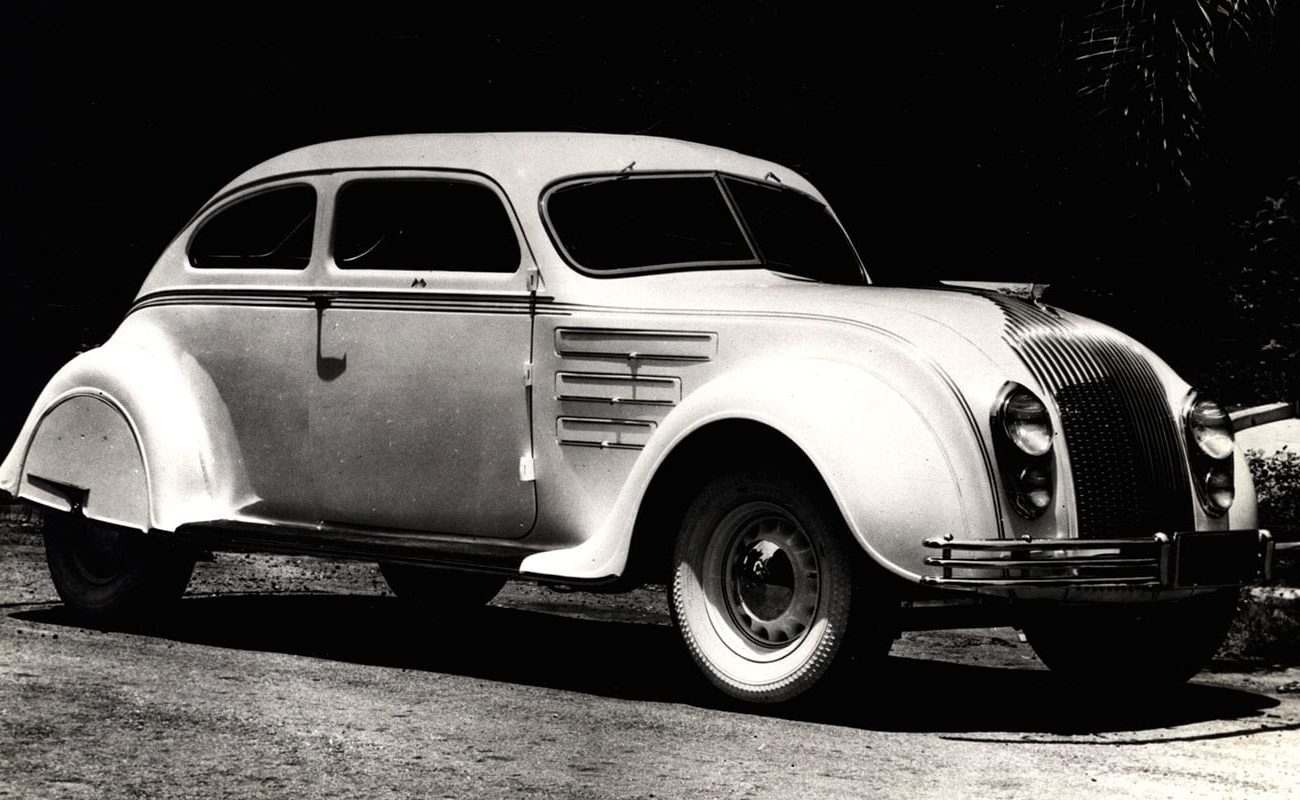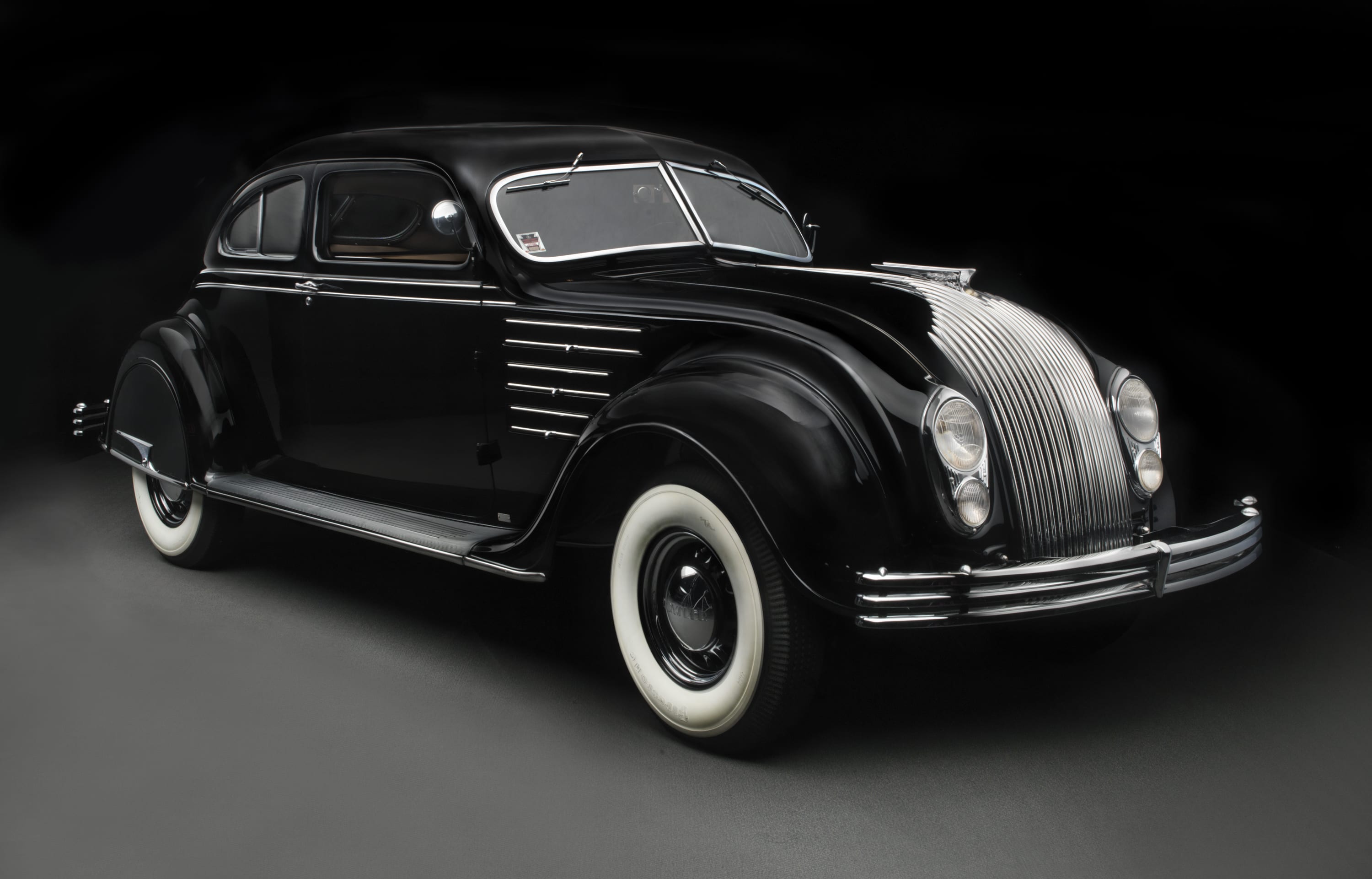Tech Specs
Eight-cylinder L-head in-line front mounted engine, 323.5 cubic inches (5301 cc), 128 hp at 3400 rpm
Before/After
1934 Chrysler


About the 1934 Chrysler Airflow Imperial CV-8 Coupe
Though its Airflow was a commercial failure, Chrysler’s brave attempt at innovation may well have been the most important mass-produced vehicle of the 1930’s. Not only did the Chrysler Airflow lead the way in terms of aerodynamics — “streamlining” as it was then called — it was also among the first cars to incorporate a lightweight construction that presaged today’s unibody vehicles.
The revolutionary concept was born when Chrysler engineer Carl Breer noticed the similarity between the shape of airplanes and birds, and he mused how archaic auto design was in comparison. With fellow Chrysler engineers Fred Zeder and Owen Skelton, he went to aviator Orville Wright, who understood more than a little about aerodynamics, to test models in a wind tunnel. The result was the Airflow’s ground-breaking streamlined design, which was sleeker, longer, and sat lower to the ground compared to other American cars.
The innovations didn’t stop there. By moving the engine over the front axle, the Airflow gained additional interior space, while seating passengers between the front and rear wheels improved ride quality. The Airflow was a technological marvel with automatic overdrive and raked “safety glass” windshield.
Introduced at the 1934 New York Auto Show, the eight-cylinder Airflow caused a sensation. Orders for the revolutionary car poured in, and the Airflow’s complex construction was rushed. It eventually required expensive new tooling, which caused major assembly delays. After the initial spurt, sales were slow, and Chrysler ceased production of the landmark model in 1937.
Despite the Airflow’s market failure, other manufacturers soon adopted the lighter weight steel body construction and better aerodynamics it pioneered. The spirit of the Airflow is a silent but important part of every car we drive today.
In 1934 Chrysler manufactured just 212 of the Airflow Imperial CV Coupes, which were six inches longer and had more amenities than the standard models. The vehicle on display is one of the few CV Coupes known to survive.
Photos – Peter Harholdt








